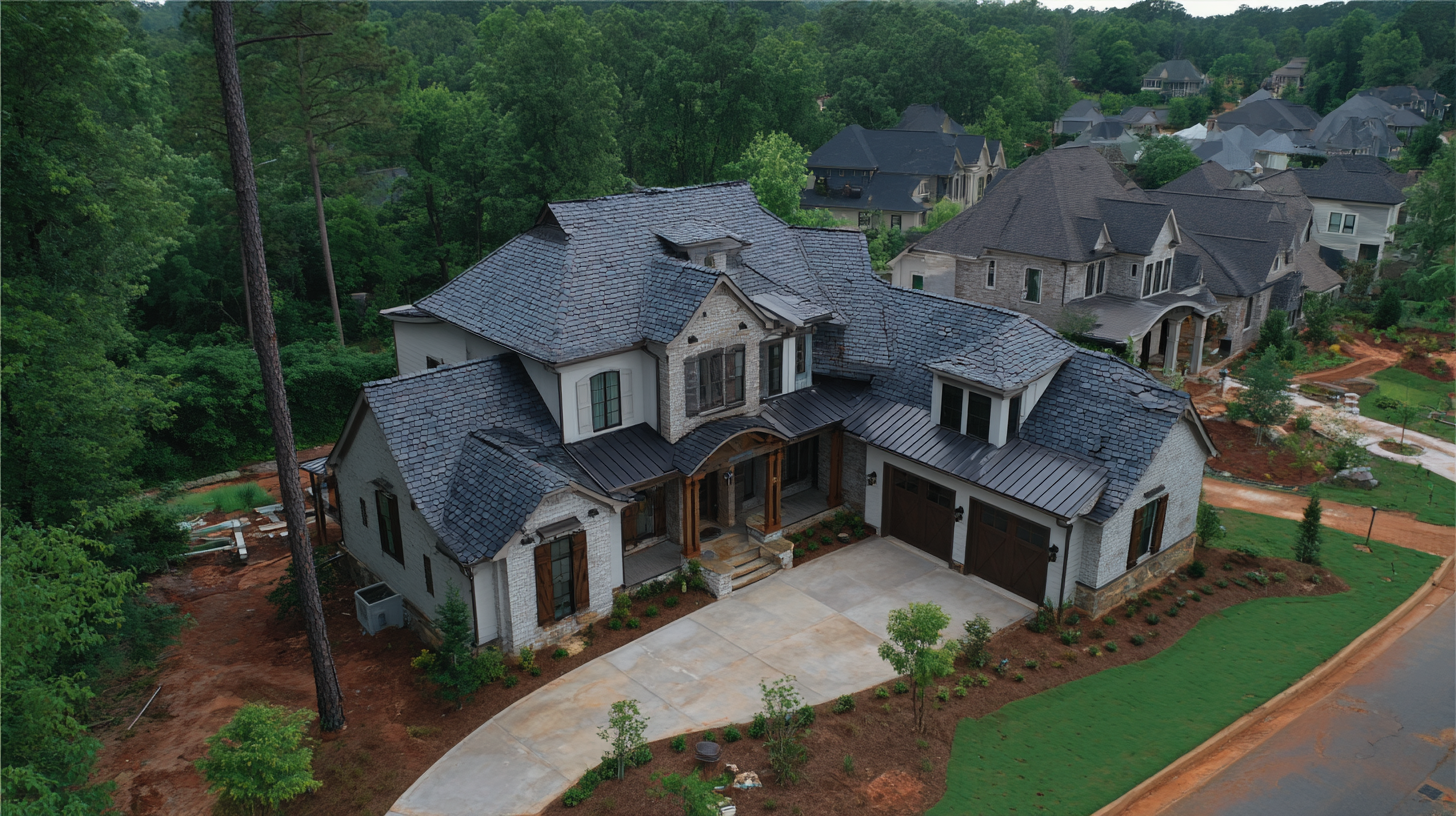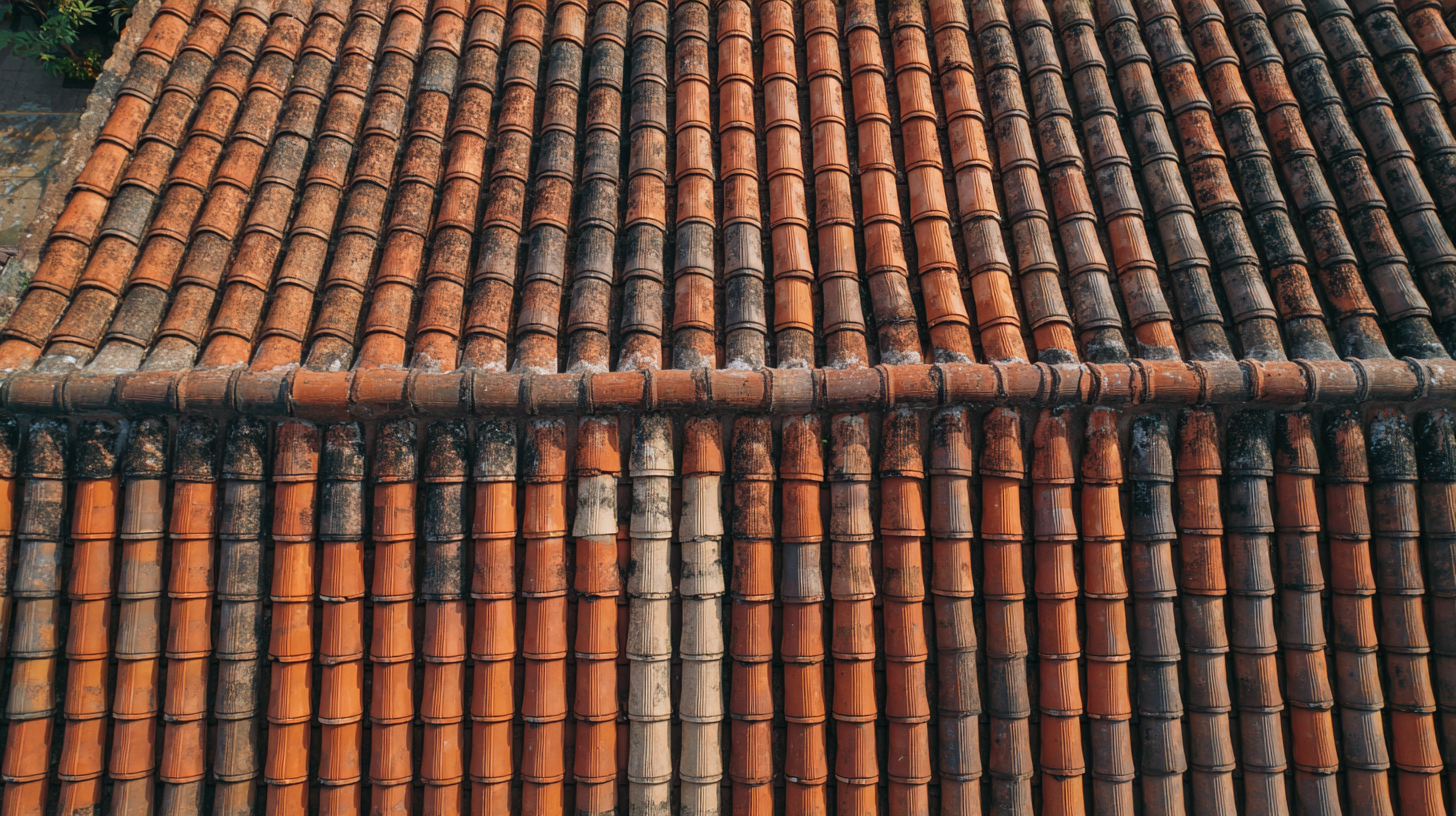
Leave Your Message
-
Phone
-
E-mail
-
Whatsapp

In modern construction, the selection of materials plays a crucial role in promoting sustainability and reducing environmental impact. The demand for eco-friendly solutions has surged, with the global market for eco-friendly roofing materials expected to reach $22 billion by 2027, highlighting the increasing importance of eco-friendly roof tiles. These roofing options not only enhance energy efficiency but also contribute to the reduction of carbon footprints and urban heat islands. However, navigating the myriad choices available can be challenging for builders and homeowners alike.

Factors such as durability, aesthetic appeal, and compliance with local regulations must be balanced against the benefits of environmentally friendly materials. As we delve into the complexities involved in selecting the best eco-friendly roof tiles, it is essential to understand the benefits they offer and the criteria that can guide informed decision-making.
When it comes to selecting eco-friendly roof tiles, understanding the various types and materials available is crucial for modern construction. Eco-friendly roof tiles can significantly reduce energy consumption and contribute to sustainable building practices. According to a report by the Environmental Protection Agency (EPA), the use of reflective roofing materials can lower roof temperatures by up to 30%, which in turn decreases the need for air conditioning and reduces energy bills.
Among the popular materials for eco-friendly roof tiles are clay, slate, and recycled metal. Clay tiles are known for their durability and natural insulating properties, with a lifespan exceeding 50 years if properly maintained. Slate, a natural stone, offers not only longevity but also aesthetic appeal, making it a favored choice for homeowners seeking a timeless look. Alternatively, recycled metal tiles, made from post-consumer products, represent a compelling option by diverting waste from landfills and offering a lightweight, durable solution that can last over 60 years.
In addition to their environmental benefits, many eco-friendly roof tiles can also improve a building's overall efficiency. A study by the Cool Roof Rating Council indicates that cool roofs, which often utilize reflective and light-colored materials, can decrease urban heat island effects, making cities more livable while reducing the energy load on buildings. With the growing emphasis on sustainability in modern construction, understanding the spectrum of eco-friendly roofing materials is essential for informed decision-making.
When selecting eco-friendly roof tiles for modern construction, two critical factors come into play: energy efficiency and durability. Energy-efficient roofing materials can significantly reduce a building's overall energy consumption. For instance, tiles made from reflective materials help to minimize heat absorption, keeping interiors cooler and reducing reliance on air conditioning systems. Additionally, green roofing options such as living roofs, which incorporate vegetation, can provide natural insulation and further enhance a building’s energy performance.
Durability is equally important in the selection process. Eco-friendly roof tiles must withstand various environmental conditions while maintaining their aesthetic appeal and functionality over time. Materials like recycled metal, clay, or concrete tiles often excel in durability, offering resistance to extreme weather conditions and reducing the need for frequent replacements. This longevity not only saves money in the long run but also lessens waste in landfills, aligning with sustainable building practices. Choosing roof tiles that excel in both energy efficiency and durability is essential for creating environmentally responsible structures that stand the test of time.

In modern construction, the trend towards sustainability has significantly influenced the selection of roofing materials, particularly eco-friendly roof tiles. Among these options, synthetic resin tiles have gained popularity due to their durability and environmental benefits. The market for synthetic resin tiles is projected to escalate from USD 80.436 million in 2025 to USD 127.91 million by 2033, with a remarkable compound annual growth rate (CAGR) of 5.97%. This growth reflects a broader shift towards sustainable building practices and highlights the importance of budget considerations when selecting roofing solutions.
Cost analysis plays a crucial role in the decision-making process for contractors and homeowners alike. While the initial investment in eco-friendly roof tiles might be higher than traditional materials, the long-term savings on energy efficiency, maintenance, and replacement costs can make these options financially viable. By budgeting effectively for these sustainable solutions, builders can contribute to a greener future without compromising on quality or functionality. Investing in eco-friendly roof tiles not only supports environmental goals but also aligns with the increasing demand for sustainable living spaces in today's construction industry.
This chart illustrates the cost comparison of various eco-friendly roof tiles used in modern construction. The prices are simulated averages based on common market data.
Choosing eco-friendly roof tiles is as much about aesthetics as it is about sustainability in modern construction. As homeowners and architects increasingly prioritize green building practices, the market for eco-friendly tiles has expanded, offering a variety of designs that can complement contemporary architecture. According to a report by the National Association of Home Builders, over 75% of homeowners are now actively seeking energy-efficient and environmentally friendly materials when building or renovating their homes. This trend highlights the importance of integrating aesthetic choices that do not compromise the visual appeal of a structure while meeting sustainability goals.
When selecting eco-friendly roof tiles, considerations such as color, texture, and overall design are critical. Many manufacturers now offer tiles made from recycled materials or natural products, featuring innovative designs that blend seamlessly with modern styling. For instance, ceramic tiles, which have a low environmental impact and can reflect heat, are not only durable but can also be produced in various colors and finishes. Research indicates that buildings utilizing reflective roofing materials can reduce energy costs by up to 20%. In this manner, the right choice of eco-friendly tiles can enhance a home’s beauty while simultaneously contributing to energy efficiency and sustainability.
In modern construction, the emphasis on eco-friendly roofing materials is markedly rising, driven by the need for sustainable building practices. Recent reports predict the global roofing materials market will grow from $143.86 billion in 2025 to $185.92 billion by 2032, with a compound annual growth rate (CAGR) of 3.6%. Furthermore, the market for reflective and cool roofing coatings is expected to exceed $4.9 billion by 2024, indicating a CAGR of over 6.9% from 2025 to 2034 as they help reduce energy consumption.
Choosing the right eco-friendly roof tiles can be challenging, but innovation plays a key role in simplifying this process. With companies increasingly focusing on sustainability, advancements in material technology provide options that enhance energy efficiency and environmental impact. For instance, the growing trend of using cool roofing systems can significantly lower cooling costs in buildings, making it beneficial for homeowners and commercial property investors alike.

Tips:
1. When selecting eco-friendly roof tiles, look for certifications that indicate sustainability and energy efficiency.
2. Consider materials that boast a long lifespan, as they not only reduce replacement frequency but also contribute to lower waste.
3. Stay informed about innovations in the roofing materials market, as new technologies can offer better performance and environmental benefits.